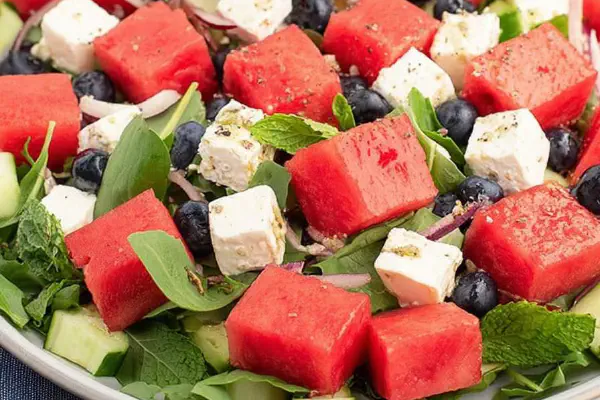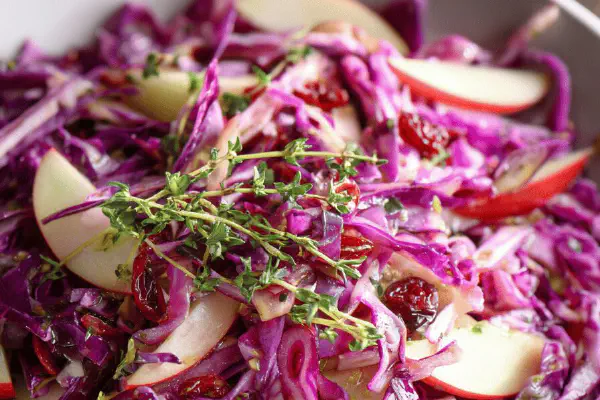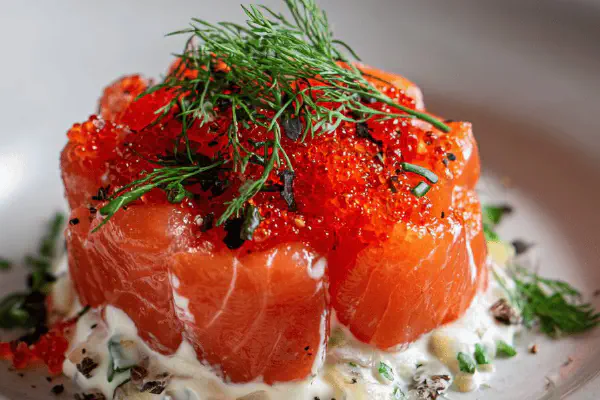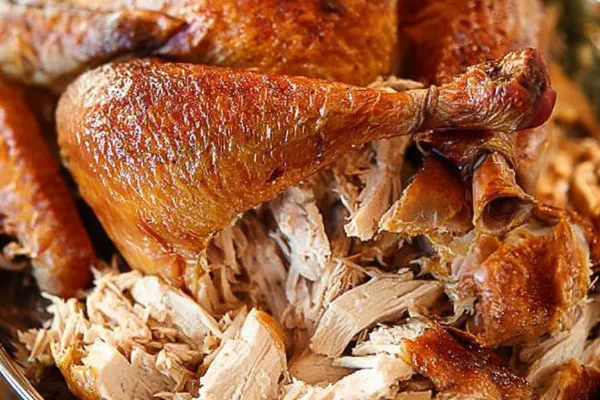Danish Salmon Tartines

By Emma
Certified Culinary Professional
Ingredients
- 180 g canned salmon without skin or bones, drained
- 100 g smoked salmon, finely chopped
- 60 ml plain yogurt
- 25 ml olive oil
- 15 ml (1 tbsp) caper berries, chopped
- 15 g fresh dill leaves
- 4 small roasted carrots, sliced thin
- 4 radishes, thinly sliced
- 8 slices rye bread, toasted
- 3 Lebanese cucumbers, sliced
- Lemon wedges to serve
About the ingredients
Method
- Drain canned salmon well—excess liquid kills texture; press gently with paper towel if needed.
- In bowl, fold salmon chunks with yogurt, olive oil, caper berries, dill; avoid over mixing to keep some fish texture visible—not mushy. Season sparingly; salinity varies with smoked salmon.
- Toast rye slices over medium heat; watch for chestnut-brown edges, slight crackle; avoid black burnt bits—bitter.
- Layer roasted carrot slices on toast; earthy aroma, slightly caramelized surface. Adds sweetness balancing fish.
- Spread salmon mixture generously over carrots, gently pressing so it sticks without squishing bread.
- Top with crisp radish slices for freshness and peppery crunch—contrast to creamy spread.
- Arrange cucumber slices on side or scattered atop for cool, watery crunch; brightens plate visually.
- Serve immediately with lemon wedges; squeeze over tartines just before eating to lift flavors.
- If preparing ahead, keep components separate to avoid sogginess. Combine last minute.
- Note: If no caper berries, substitute with green olives chopped coarse; completely changes flavor profile but works well - less briny, more meaty.
Cooking tips
Chef's notes
- 💡 Drain canned salmon thoroughly, no soggy mess allowed. Press with paper towel gently. Texture kills flavor but moisture needs control. Mix salmon chunks loosely with yogurt and olive oil — fold, don't whip. Keep some fish texture intact. Caper berries chopped medium, not tiny mush, not big chunks that overshadow mix.
- 💡 Toast rye bread on medium heat; wait for subtle crackle, chestnut brown edges—listen carefully. Burnt toast ruins layers with bitterness. Patience here. Carrots roast till slightly sticky, surfaces caramelized but not blackened. Adds subtle sweet earthiness that offsets oily salmon mix; don’t skip roasting step.
- 💡 Layer order matters. Carrots first to shield bread from moisture. Then salmon mixture spread gently—press but don’t squash. Radishes thin sliced on top add crunch and sharp contrast. Cucumber slices on side or scattered; watery but fresh bite that balances dense textures. Lemon wedges squeezed last second brighten all—acid cuts richness, never omit.
- 💡 Substitutions: smoked salmon can be swapped with smoked trout for different smoky notes. No caper berries? Use coarsely chopped green olives but expect different flavor profile; less briny more meaty. Yogurt must be plain, full-fat preferred to maintain creamy texture. Olive oil gives slight fruity aroma different from neutral vegetable oil. Adjust seasoning carefully as smoked salmon varies saltiness.
- 💡 Mixing technique decides spread texture—fold, avoid over stirring or it turns mush. Watch moisture balance; too much yogurt or oil makes spread runny. Protect toast crunch by layering carrots first and assembling last minute if prepping ahead. Keep cold components separate to avoid sogginess. Timing flexible but trust smell of dill and look of salmon chunks—not watery, not dry.
Common questions
How to prevent soggy toast?
Keep carrot layer as moisture barrier. Assemble last minute. Toast edges crisp and warm only. If prepping ahead store spread separate. Avoid wet ingredients directly on bread too soon. Crunch dies fast otherwise.
Can I use capers instead of caper berries?
Capers work but flavor changes. Smaller size means less juicy bursts. Texture different too. If no caper berries, chopped green olives add meatiness but saltiness drops. Adjust seasoning accordingly.
What if salmon spread is watery?
Drain canned salmon very well first. Use paper towels on fish. Fold mix gently not stir. Too much yogurt or oil? Reduce gradually. Spread must hold some shape, not run off toast. Helps keep layers distinct and texture vibrant.
How to store leftovers?
Separate components best. Store salmon mix airtight in fridge. Toast and veggies separately. Combine right before serving. Keeps textures alive. If mixed early, toast softens quickly and fresh crunch is lost. Lemon wedges added only at serving.



